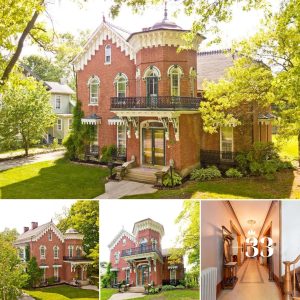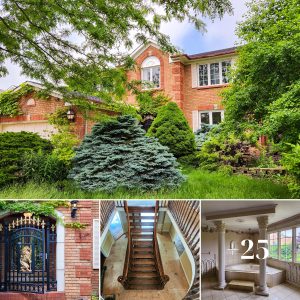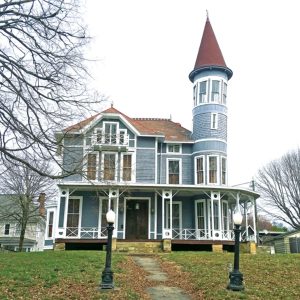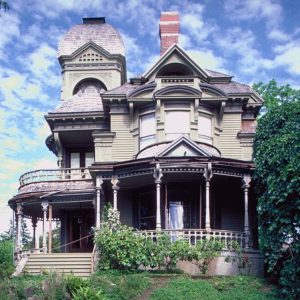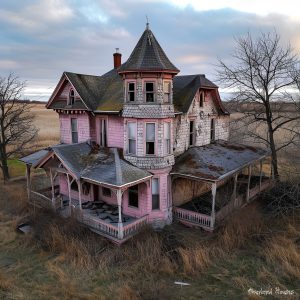Explore this abandoned house costing millions
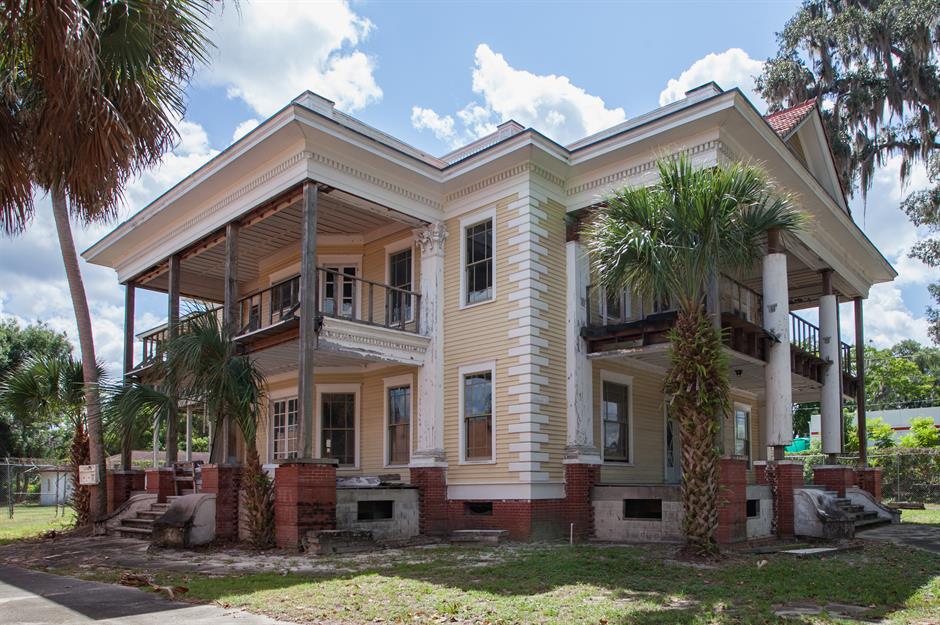
In the heart of Florida sits the John Dutton House, an impressive neoclassical residence known among locals as the Money Pit Mansion. Having lain empty for decades, its various owners have been unable to restore it to its former glory due to substantial damage and mounting renovation costs, however, the property may be about to start a new chapter…
Click or scroll on to take a tour of this forlorn Florida landmark and uncover its fascinating history.
Once a grand home

The once-grand home was originally built by Georgia native John Wesley Dutton, who reportedly made his fortune through naval stores and lumber manufacturing at the turn of the 20th century in DeLand, Florida.
Completed in 1911, the home took three years to construct and is still considered one of the most ornate mansions in the area with its Grecian-style pillars. The house cost $25,000 to build, which equates to around $821,900 (£655k) in modern money.
A rare survivor
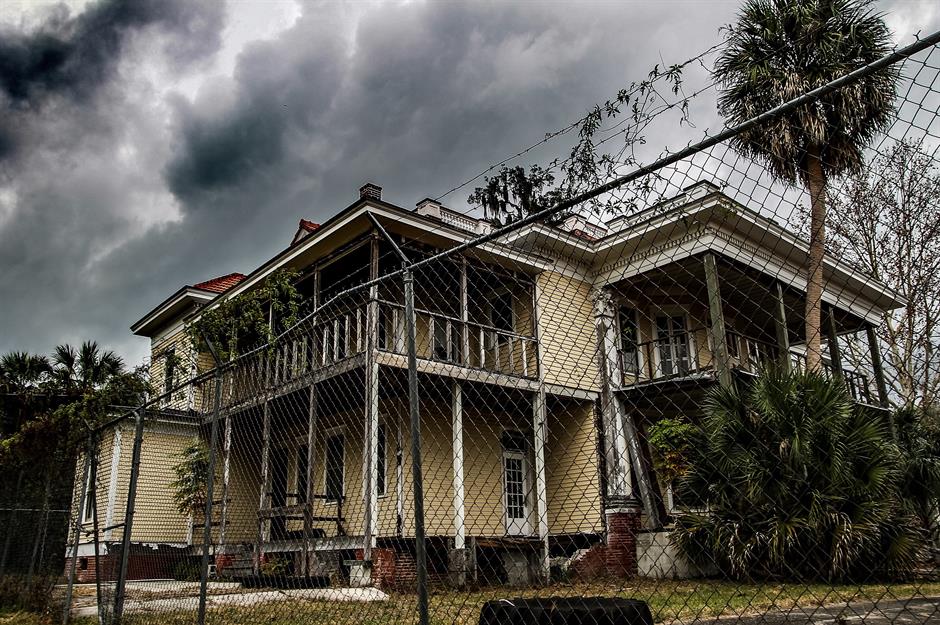
An architectural treasure, the enormous 11,000-square-foot mansion has survived for more than 110 years, unlike many of the grand early mansions that were built in Florida.
However, when photographer Leland Kent of Abandoned Southeast visited the property in 2016, it had long been deserted and had fallen into a sorry state of disrepair.
Changing hands

The entire home was constructed using mahogany and was once a place of grandeur. However, since its abandonment, it’s been plagued by crumbling ceilings and peeling plasterwork. Still an imposing entrance, the front door is flanked by intricate glasswork, while ornate covings line the ceilings.
In a strange turn of events, the home’s first owner, Dutton, reportedly swapped properties with the vice president of a local bank as part of a house trade in 1924.
A crumbling staircase
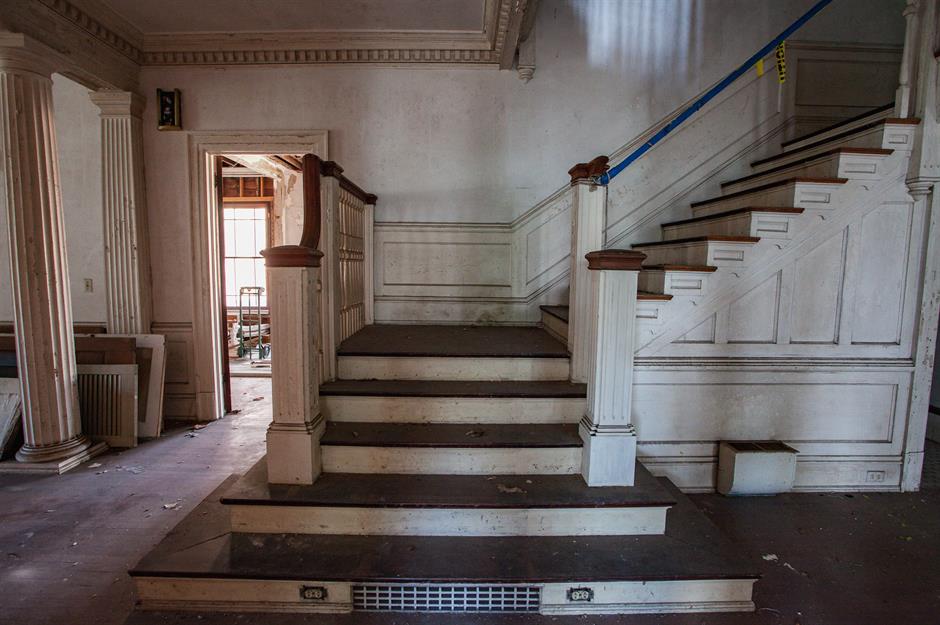
The mansion was then sold in the 1940s and repurposed as a funeral parlour, before being turned into a meeting hall 20 years later and then converted into apartments.
Pictured here, the once-glamorous staircase is now crumbling, lined with safety tape instead of a banister, while the white paintwork has turned grey after years of neglect.
Faded grandeur
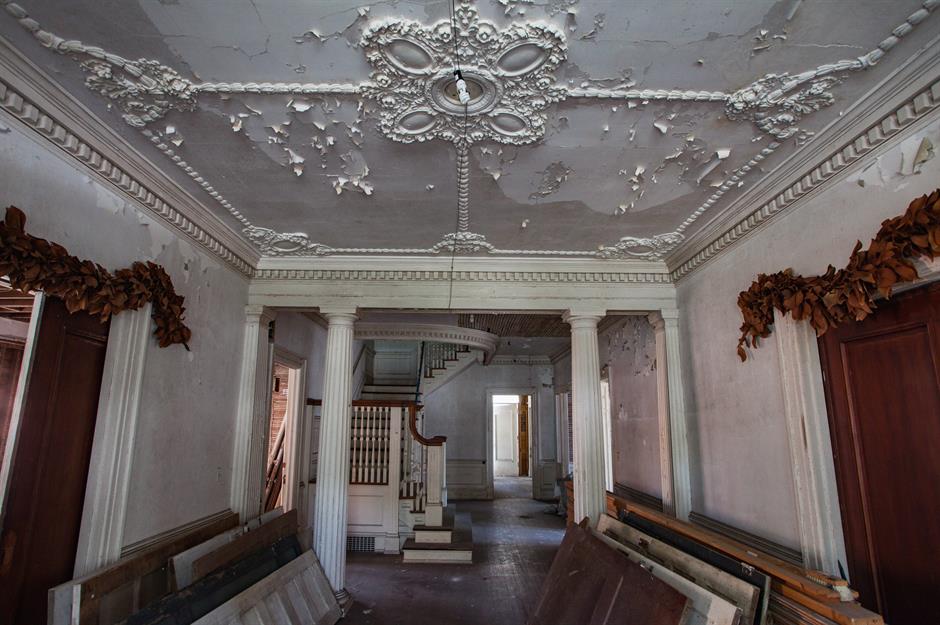
Once upon a time, ornate mahogany columns greeted guests in the hallway, along with elaborate plasterwork on the ceiling. However, all that remains now is tired paintwork and leftover doors and panels from numerous failed renovation attempts over the years.
A state of disrepair
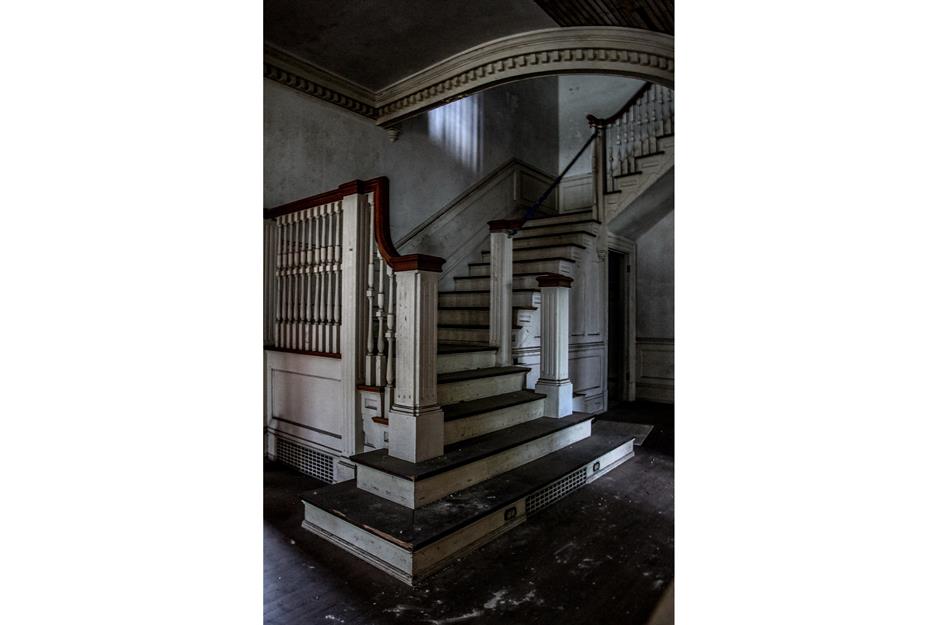
In 1990, the home fell into foreclosure and was then listed on the real estate market for $129,000, the equivalent of around $308,000 (£245k) today. However, with no buyers volunteering to take on the fixer-upper, the historic house was sadly destined for the wrecking ball and the bank applied for a demolition permit. So, why is it still standing today?
A second chance
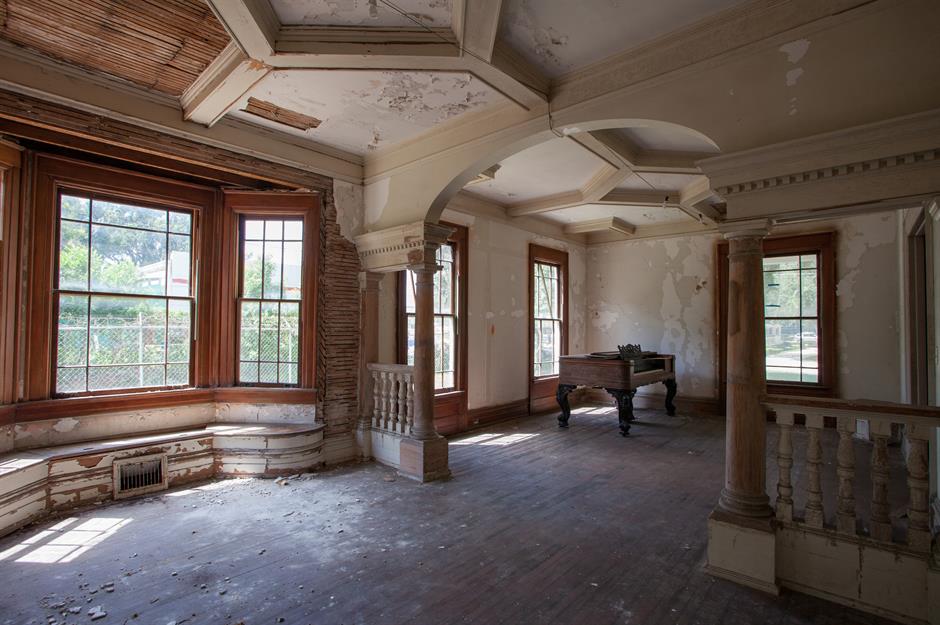
The house is said to have been saved from imminent doom in 1992 by a local couple who offered the bank around $90,000 – in the region of $200,000 (£159k) today – according to Kent.
With extensive termite damage to its wooden frame, the house was in need of some serious work. At the time, the cost of the renovation was estimated at more than $220,000, or $490,000 (£390k) in modern money.
Hidden treasures
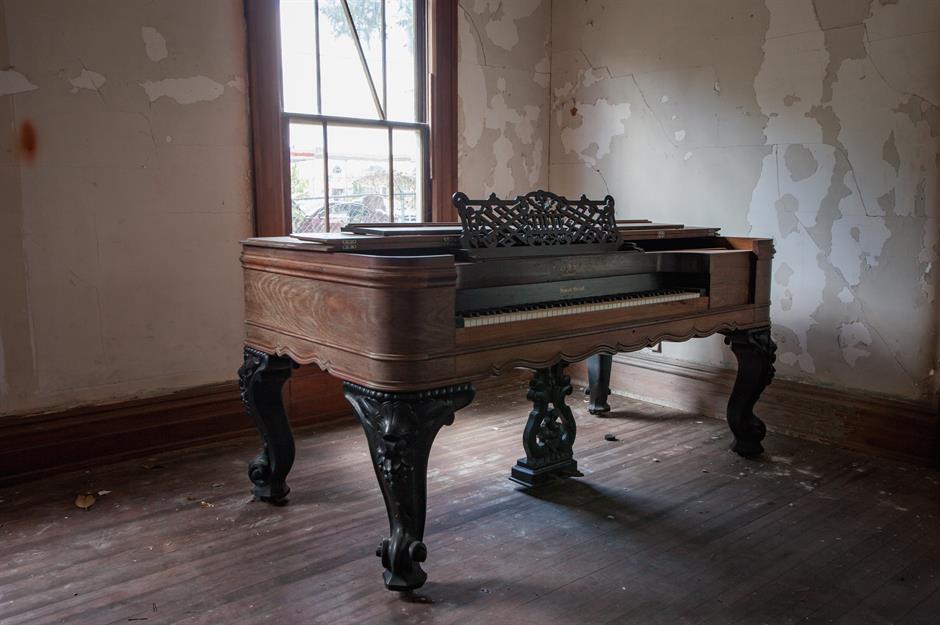
When Kent photographed the house in 2016, it was largely empty with the exception of abandoned construction materials, yet one or two hidden treasures could still be found.
Pictured in the downstairs parlour room, a handsome piano sits among damp, peeling walls and dirty, worn floorboards. The Civil War-era Charles M Steiff grand piano is estimated to be worth in the region of $28,000 (£22k) today.
Hopes for restoration
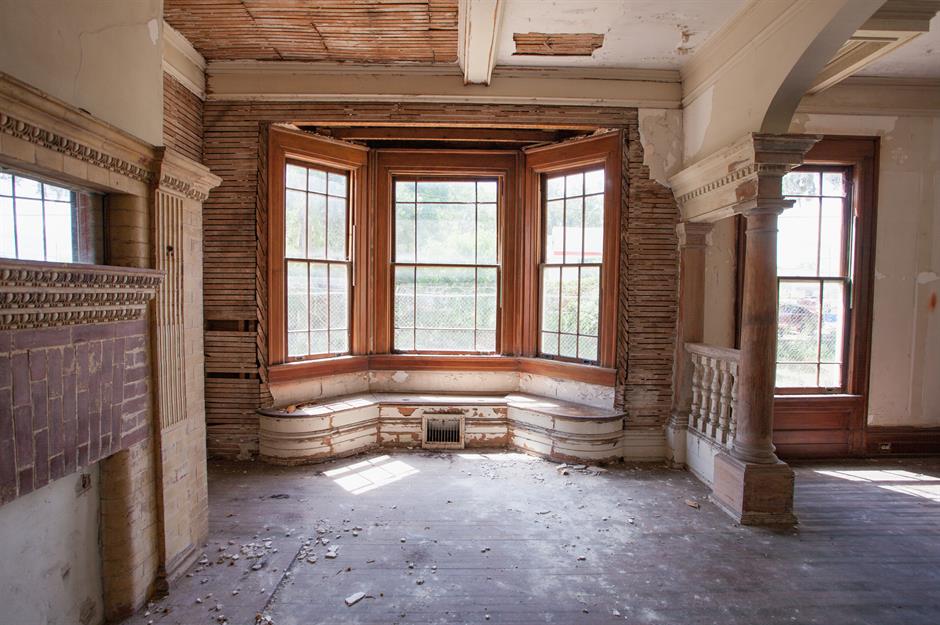
The local couple who had saved the house from demolition hoped to transform the mansion into a library or a wedding venue in five years. However, donations to the restoration efforts dwindled over time and purported health issues forced them to let the house sit idle.
Despite signs of damage, the ground floor has faired well over the years and the light-filled sitting room still wows with stunning sash windows and columned archways.
Unique features

Despite the home’s condition, it’s easy to see why the Money Pit Mansion was saved at the last moment. It’s packed with beautiful period features just begging to be restored.
The sweeping staircase would have once been a prominent architectural centrepiece, leading upstairs to the first floor and beyond to the attic space at the top of the property.
Heading upstairs

According to Kent, the owners asked the city to take over the restoration. The city thought the house would be best served if a dedicated nonprofit led the project and Historic DeLand Inc was established in 1995. The board secured a number of grants from the state over the years to fund the ongoing renovations.
Just look at the handcrafted spindles that line the stairwell – the home’s intricate craftsmanship would no doubt shine once more following an extensive restoration.
Down to the bare bones

Despite being stripped of its features, the bare bones of the upstairs landing still have promise. What was previously a grand spacious hallway leading to an array of elegant bedrooms has been reduced to an empty, haunting space with an unfinished ceiling and debris scattered on the floor.
Hidden heights
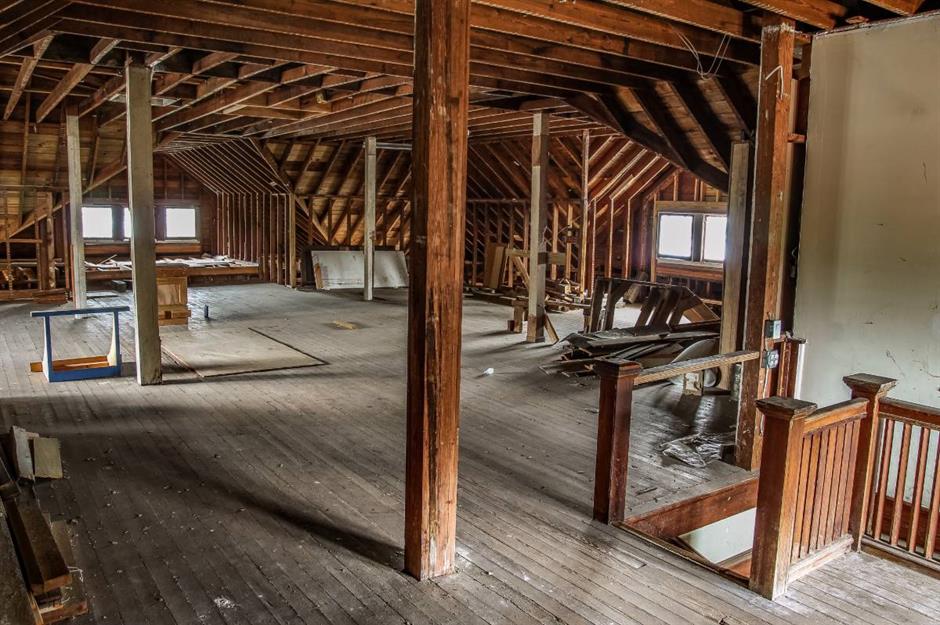
The huge home also features a vast attic, which would have provided plenty of space for the original owner and his large family. With intricate beams and plenty of period woodwork, the vaulted room is nothing short of spectacular.
What could it have been?
.jpg)
With few hints, we can only wonder what the space would have been used for. But with plenty of light and square footage, it could have been a spare bedroom or even a playroom for children. However, today it’s scattered with building materials with little sign of its former life.
Frozen in its tracks
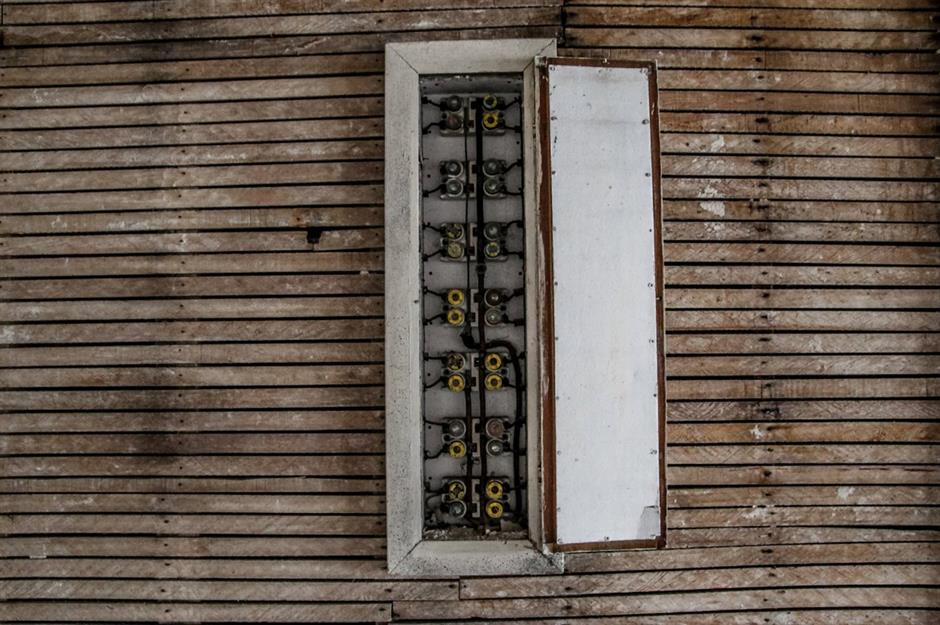
Pictured here is an old electrical system that looks unlikely to be up and running anytime soon.
According to Kent, a new board called Dutton House Inc was created in 2005 to replace the nonprofit organisation set up by the city authority. However, following the 2008 recession, no further grants were made available by the state, freezing the project in its tracks and leaving the house to languish.
Hope on the horizon
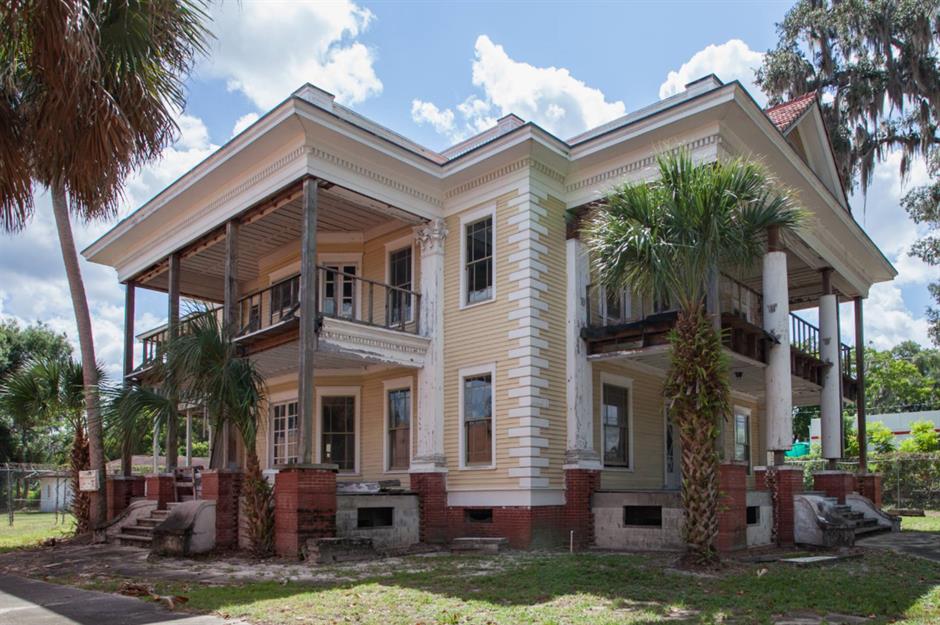
In 2023, Dutton House Inc finally listed the property for sale after funds dried up. It was purchased in March of the same year by local Florida business owner Tyler Spore, who founded the Dutton House Restoration LLC in the hopes of bringing the house back to life.
According to local newspaper The Beacon, around $1.1 million (£876k) in grants has been poured into restoration attempts so far. An appraiser recently estimated that the remaining work could cost the same amount again, making this an incredibly expensive venture for the property’s new owner.
While Spore is still contemplating exactly what the home’s future will look like, he’s said to be considering turning the property into a historic bed-and-breakfast or an event space for the city.
The start of a new chapter
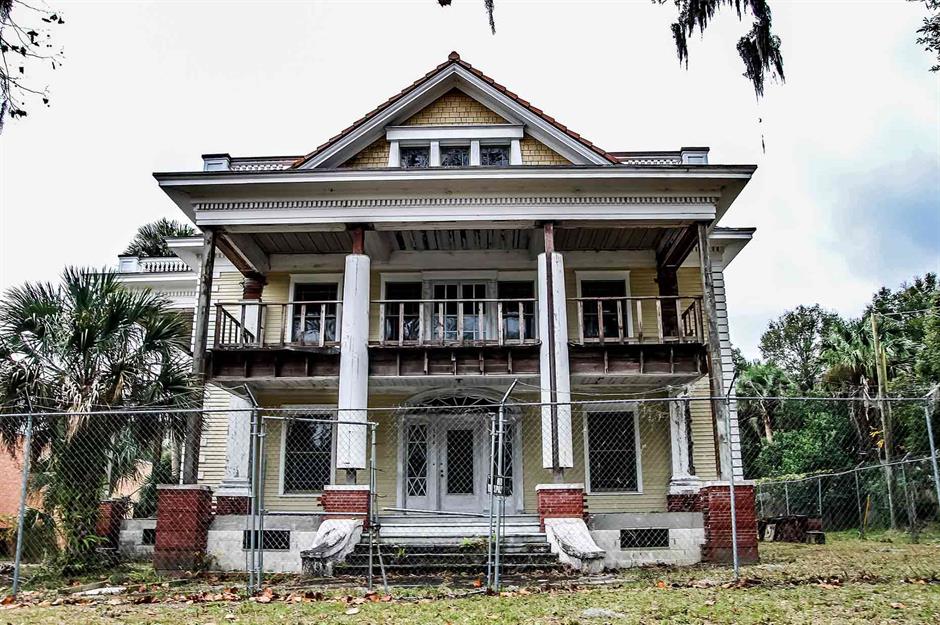
The new buyer seems to have the determination, funds and expertise to restore this Florida landmark and restoration work has already begun on the home’s exterior.
“Old homes have personalities and require special attention to preserve their souls,” Spore told The Beacon. “I know from direct experience what it takes to maintain an old home… What I learned from the past is that preservation, albeit expensive, is rooted in doing the job right the first time.”
Now, almost 35 years since renovation efforts began, the Money Pit Mansion may finally be restored to its former glory.
